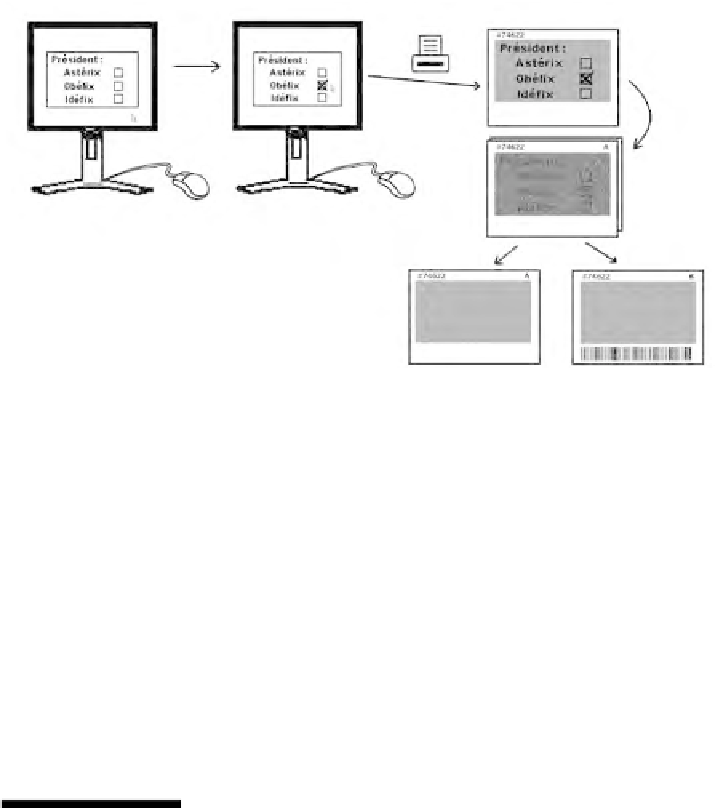Cryptography Reference
In-Depth Information
FIGURE 12.16
The voter enters the vote, verifies the image, and separates the slides.
a certain angle that differs from the right angle because of central projection
and because the viewer has two eyes at different positions. This is estimated
in [10] to be 0.25 mm in the case of a usual TFT screen, less for displays
of new mobile phones, but might be more if we require a higher distance of
slide and screen so that the use of refraction can take effect (depending on the
size of the lenses). Slight misplacements of the slide cause effects like a bad
contrast or even inverting the picture as described in [10] where the author
also proposes methods to use interference effects at the frame of the slide as
an aid for adjustment.
12.7 Voting with a Receipt Based on Visual
Cryptography
The purpose is to give a voter a receipt, which allows her or anyone else to
verify that her vote was counted in the final result. The diculty comes from
the requirement that the voter should not be able to prove to anyone else,
what her vote was since this would make abuses such as vote selling possible.
The main procedural method in [6] lets the voter enter her ballot on a touch
screen and then the voting machine produces two slides laminated together
that show the ballot image with visual cryptography to the voter only as
shown in Figure 12.16. Then the voter separates the two slides and goes to
the poll worker. Here one of the slides is destroyed and the other one is scanned









Search WWH ::

Custom Search